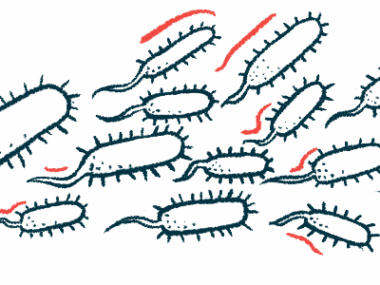Cancer treatment works to control acquired angioedema in elderly man
Hard-to-treat condition linked to underlying blood disorder in man, 84
Written by |

The case of an elderly man who developed acquired angioedema associated with an underlying blood disorder called monoclonal gammopathy was described in a new report, with the researchers noting the condition is “very rare but serious.”
The man’s angioedema was controlled only after the underlying monoclonal gammopathy was successfully treated using a regime that included daratumumab, an anti-cancer medication.
According to the researchers, “this case illustrates the impact of refractory, debilitating, and potentially life-threatening [acquired angioedema] as a rare manifestation of monoclonal gammopathy and highlights the potential of daratumumab-based fixed-duration treatment to achieve clinical remission.”
The team added: “To our knowledge, this is the first case of [acquired angioedema] treated with a daratumumab-based regimen.”
Their study, “Daratumumab-based treatment of monoclonal gammopathy-associated angioedema due to acquired C1-inhibitor deficiency,” was published in the Journal of Allergy and Clinical Immunology: Global.
To stop acquired angioedema, clinicians had to treat underlying condition
Acquired angioedema develops due to abnormally low levels of the protein C1 esterase inhibitor, or C1-INH, which blocks the activity of other proteins important for blood clotting, inflammation, and wound healing.
This type of angioedema tends to develop in older people who have other underlying health problems, such as blood cancers, which lead to abnormally low C1-INH activity.
Now, scientists in the Netherlands described the case of an 84-year-old man who developed acquired angioedema associated with monoclonal gammopathy. This precancerous disorder is characterized by the excessive growth of B-cells — the immune cells responsible for making antibodies. It affects up to 2% of adults, but in the vast majority of patients, it doesn’t cause any notable health issues or require treatment.
In this case, when the man experienced swelling attacks, the swelling was well controlled with Firazyr (icatibant), an approved on-demand angioedema treatment. However, his swelling attacks were very frequent, at about two per month, and some occurred around his throat. Because swelling in that area can cut off the airways and be life-threatening, his healthcare team sought additional treatments to prevent these attacks.
At first, the clinicians tried prophylactic, or preventive, treatment with danazol, another approved medication. This was effective for controlling swelling but caused psychiatric side effects and thus had to be discontinued. Another prophylactic therapy, tranexamic acid, did not work to control the man’s swelling attacks.
Seeing that prophylactic angioedema treatments were not proving effective, the clinicians decided to try treating the patient’s underlying monoclonal gammopathy. The team first tried rituximab, a B-cell-depleting drug used for cancer and some autoimmune diseases, but this also proved ineffective.
Then the clinicians tried treatment with a regimen of daratumumab, lenalidomide, and dexamethasone. This regimen, commonly called DRd, is often used as a first-line therapy to manage multiple myeloma, a cancer caused by uncontrolled B-cell growth. It combines the B-cell-targeting therapy daratumumab alongside the immune-modulating drug lenalidomide and the steroid dexamethasone.
The researchers noted that this regimen “was selected based on high efficacy with good tolerability in multiple myeloma.”
The patient remained free from [swelling] attacks during 12 months of follow-up.
After six cycles of the DRd treatment, the man no longer showed signs of monoclonal gammopathy on lab tests. At the same time, his C1-INH activity normalized, and experienced no further attacks for the next year.
“The patient remained free from [swelling] attacks during 12 months of follow-up,” the researchers wrote.
Based on these positive results, the researchers said that a daratumumab-based treatment regimen may be a helpful therapeutic option for people with acquired angioedema in the setting of monoclonal gammopathy.






